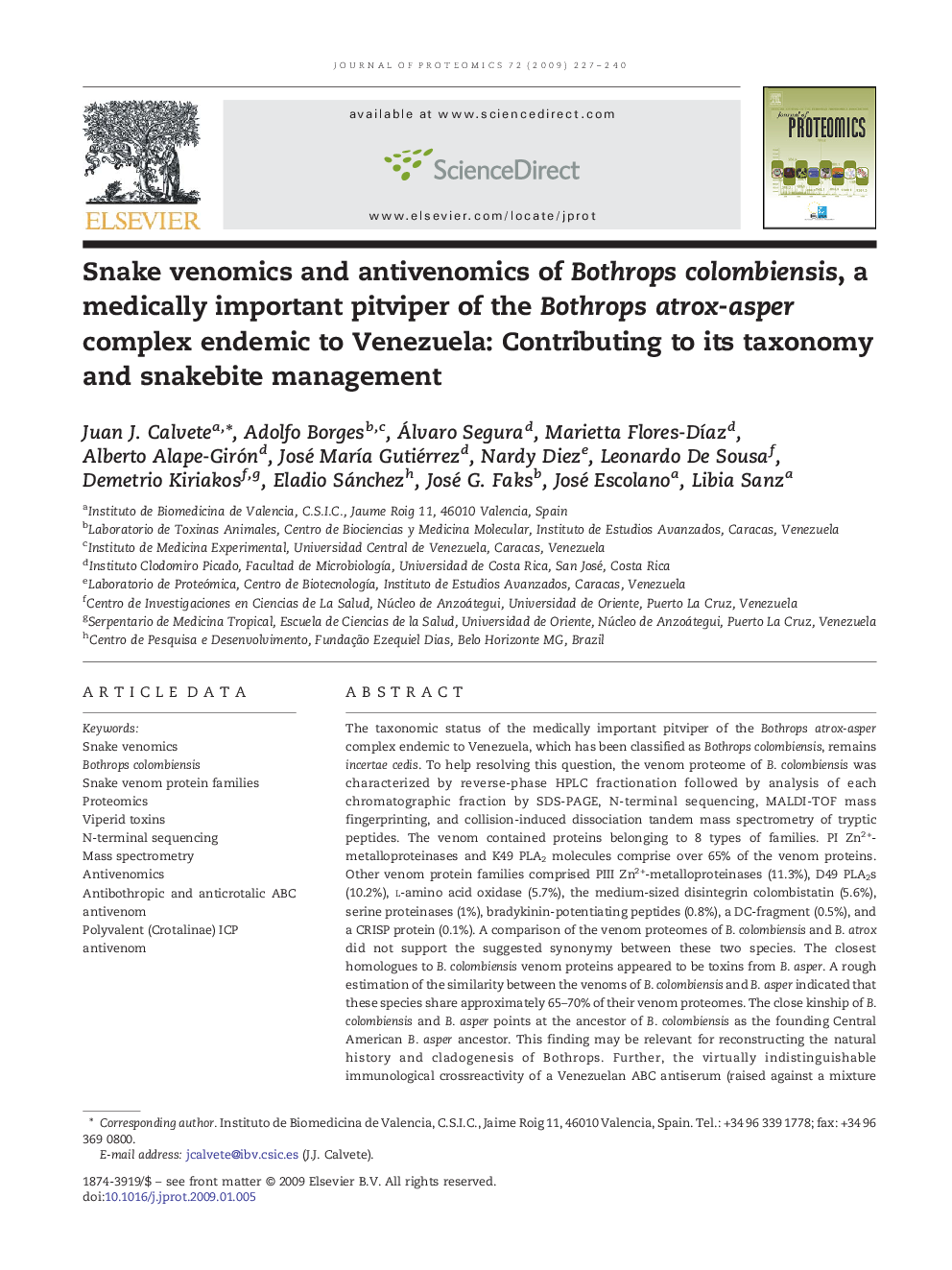| Article ID | Journal | Published Year | Pages | File Type |
|---|---|---|---|---|
| 10556288 | Journal of Proteomics | 2009 | 14 Pages |
Abstract
The taxonomic status of the medically important pitviper of the Bothrops atrox-asper complex endemic to Venezuela, which has been classified as Bothrops colombiensis, remains incertae cedis. To help resolving this question, the venom proteome of B. colombiensis was characterized by reverse-phase HPLC fractionation followed by analysis of each chromatographic fraction by SDS-PAGE, N-terminal sequencing, MALDI-TOF mass fingerprinting, and collision-induced dissociation tandem mass spectrometry of tryptic peptides. The venom contained proteins belonging to 8 types of families. PI Zn2+-metalloproteinases and K49 PLA2 molecules comprise over 65% of the venom proteins. Other venom protein families comprised PIII Zn2+-metalloproteinases (11.3%), D49 PLA2s (10.2%), l-amino acid oxidase (5.7%), the medium-sized disintegrin colombistatin (5.6%), serine proteinases (1%), bradykinin-potentiating peptides (0.8%), a DC-fragment (0.5%), and a CRISP protein (0.1%). A comparison of the venom proteomes of B. colombiensis and B. atrox did not support the suggested synonymy between these two species. The closest homologues to B. colombiensis venom proteins appeared to be toxins from B. asper. A rough estimation of the similarity between the venoms of B. colombiensis and B. asper indicated that these species share approximately 65-70% of their venom proteomes. The close kinship of B. colombiensis and B. asper points at the ancestor of B. colombiensis as the founding Central American B. asper ancestor. This finding may be relevant for reconstructing the natural history and cladogenesis of Bothrops. Further, the virtually indistinguishable immunological crossreactivity of a Venezuelan ABC antiserum (raised against a mixture of B. colombiensis and Crotalus durissus cumanensis venoms) and the Costa Rican ICP polyvalent antivenom (generated against a mixture of B. asper, Crotalus simus, and Lachesis stenophrys venoms) towards the venoms of B. colombiensis and B. asper, supports this view and suggests the possibility of indistinctly using these antivenoms for the management of snakebites by any of these Bothrops species. However, our analyses also evidenced the limited recognition capability or avidity of these antivenoms towards a number of B. colombiensis and B. asper venom components, most notably medium-size disintegrins, bradykinin-potentiating peptides, PLA2 proteins, and PI Zn2+-metalloproteinases.
Keywords
Related Topics
Physical Sciences and Engineering
Chemistry
Analytical Chemistry
Authors
Juan J. Calvete, Adolfo Borges, Álvaro Segura, Marietta Flores-DÃaz, Alberto Alape-Girón, José MarÃa Gutiérrez, Nardy Diez, Leonardo De Sousa, Demetrio Kiriakos, Eladio Sánchez, José G. Faks, José Escolano, Libia Sanz,
